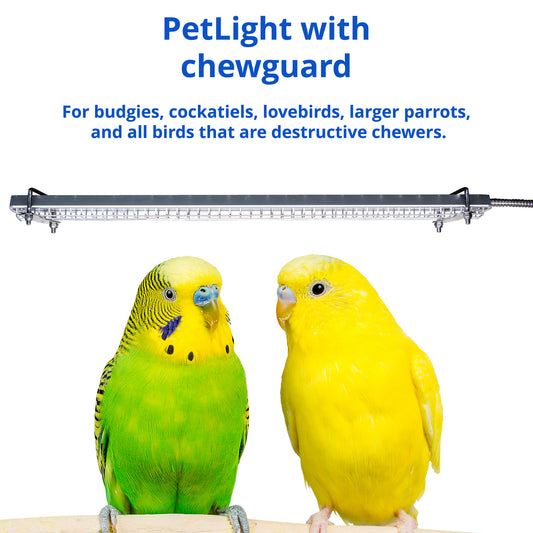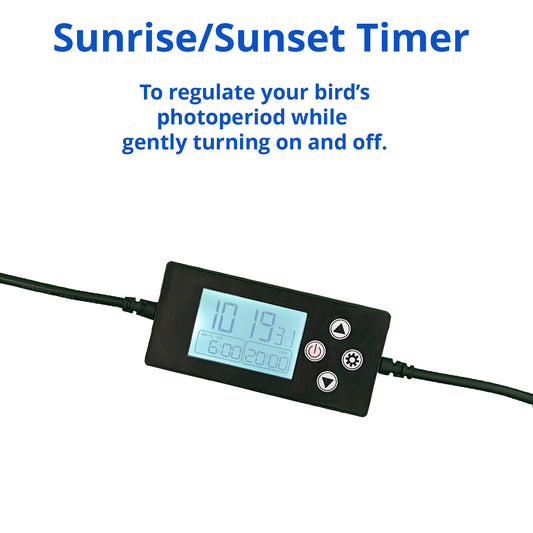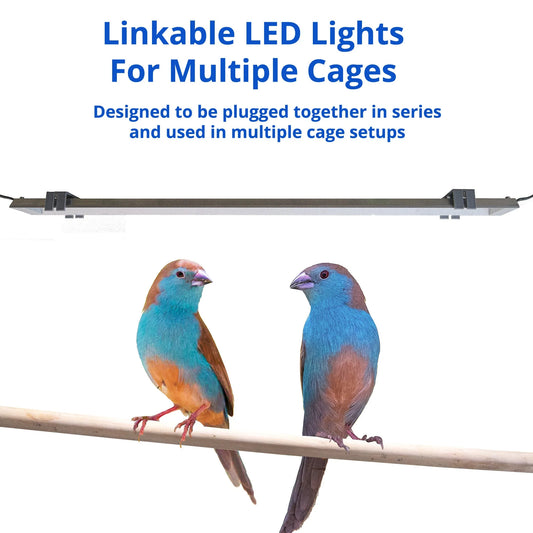Daylight Bulbs vs. Bird Lights: What’s the Difference?
Share

When you shop for “daylight” bulbs, you’ll often see claims about crisp whites, higher CRI, and a natural feel for your home. But generic daylight LEDs are engineered for human comfort, not for the unique visual and behavioral needs of indoor birds. Here’s why a true bird-specific light goes well beyond mere color temperature.
1. Spectrum vs. Temperature: More Than “5000K”
Daylight bulbs are typically sold by their color temperature (e.g., 5000K or 6500K) and CRI (color rendering index). These specs matter for reading, cooking, or showcasing artwork, but they don’t guarantee a broad, balanced visible spectrum that birds naturally seek.
Bird lights, on the other hand, are tuned to mimic the full range of daytime wavelengths without UVB, so birds perceive light much closer to real sunlight. This richer spectrum helps maintain a clear day/night cue indoors, rather than relying solely on a human-centered “daylight” metric.
2. Placement: Inside the Cage vs. Overhead Ceiling
A “daylight” LED screw-in bulb can brighten your living room … but it won’t reliably light a bird’s cage interior. Shadows from bars, uneven ceilings, and room layout mean much of that brightness never reaches your bird.
Bird-specific fixtures mount directly to the cage or immediately above it, placing light exactly where it’s needed—inside your bird’s environment. This direct approach ensures a consistent 10–12 hours of usable light each day, helping birds stay in sync with a natural rhythm.
3. Flicker-Free Performance: Invisible Benefits for Birds
Most household LEDs use high-frequency pulse-width modulation. To us, that looks like a steady glow—but birds detect any flicker, even at rates far above human perception. Flicker can cause subtle stress or cause birds to avoid certain cage areas.
True bird lights are specified as flicker-free, delivering constant illumination that birds see as calm and stable, not strobe-like.
4. Safety and Voltage: 24VDC vs. 110–240VAC
Screw-in daylight bulbs run on standard mains voltage (110–240V). That presents a chewing hazard if a curious bird nibbles on exposed cables or fixtures.
Bird fixtures like HappyBird use low-voltage 24VDC wiring and often include stainless steel conduit around the cable, making them safe even if pecked, while generic bulbs and lamps offer no such protection.
5. Supporting Day/Night Rhythm (Not Just Brightness)
Daylight bulbs turn on and off with your home’s light switch, but birds need a predictable routine: 10–12 hours of light, followed by a clear end-of-day signal. Bird lights often integrate easily with timers or smart-home systems so you can:
Simulate sunrise at a consistent morning hour
Dim or switch off lights at the same evening time
This structured schedule helps your bird fall into a natural rhythm, far beyond the on/off of a room lamp.
Final Thoughts
While “daylight” bulbs may improve how your home looks to you, they’re not designed for how birds see or live. Truly bird-specific lighting delivers:
- A broad visible spectrum (no UVB)
- Cage-mounted placement for real exposure
- Flicker-free performance
- 24VDC safety with chew-proof protection
- Built-in support for a 10–12 hour daily cycle
Choose lighting that’s made for birds, not just for rooms. That’s the difference between an ambient glow and a habitat that feels truly natural.



